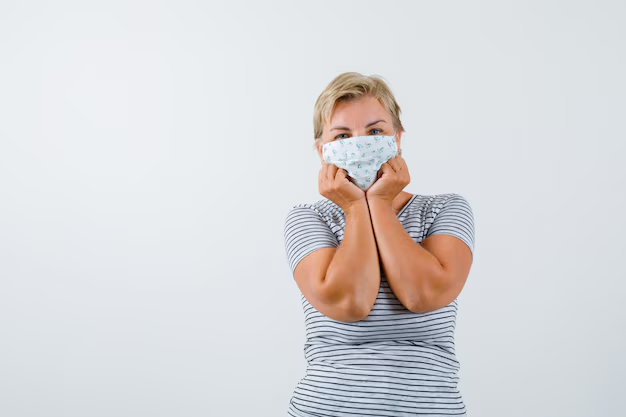Understanding Tuberculosis: How It's Contracted and What You Should Know
Every year, millions of new cases of tuberculosis (TB) arise globally, making it a persistent health challenge despite significant medical advancements. But how exactly do you get tuberculosis? Understanding the transmission, risk factors, and prevention strategies can empower individuals to take informed steps in safeguarding their health. Let's delve into the intricacies of TB and its implications for public health.
What is Tuberculosis?
Tuberculosis is an infectious disease primarily affecting the lungs, although it can also target other parts of the body, such as the kidneys, spine, and brain. It is caused by the bacteria Mycobacterium tuberculosis, which spreads from person to person through airborne particles.
Key Characteristics of Tuberculosis:
- Affected Areas: Primarily the lungs but can affect other organs.
- Symptoms: Persistent cough, chest pain, weight loss, fatigue, fever, night sweats.
- Nature: Contagious and can be both latent (inactive) or active.
How is Tuberculosis Transmitted?
Understanding how TB is contracted is crucial in controlling its spread. TB transmission occurs through the air when an infected person coughs, sneezes, speaks, or even sings.
Transmission Pathway:
- Airborne Particles: When an individual with active TB in their lungs exhales, tiny droplets containing the bacteria may be released.
- Inhalation: People nearby may inhale these bacteria-laden droplets.
- Infection Possibility: Not everyone who inhales the bacteria becomes sick. Some may develop latent TB, where the bacteria remain inactive and non-contagious, while others may progress to active TB, which is contagious.
Why TB Spread is Challenging to Control:
- Symptom Overlap: Initial symptoms of TB might resemble those of a common cold or flu, delaying diagnosis and increasing the chances of spreading the infection.
- Close Contact: High risk exists within environments where people live or work closely together, such as households, prisons, or shelters.
Risk Factors Increasing Susceptibility
While TB can affect anyone, certain groups are more susceptible due to various factors that weaken the immune system or increase exposure to TB bacteria.
High-Risk Groups Include:
- Individuals with Compromised Immune Systems: HIV/AIDS patients, organ transplant recipients, and those undergoing chemotherapy.
- Healthcare Workers: Due to frequent exposure.
- People in Close Quarter Living Conditions: Prisons, homeless shelters, and crowded urban settings.
- Substance Abusers: Alcohol abuse and drug use weaken immune responses.
- Unvaccinated Individuals: Absence of BCG vaccination makes individuals more susceptible.
Consider the Role of Social Determinants:
Socioeconomic factors such as poverty, lack of access to healthcare, and poor living conditions can exacerbate the risk and spread of TB, necessitating an integrated public health approach.
Preventing Tuberculosis: Practical Steps
Preventive measures play a pivotal role in combating TB, especially when it comes to protecting high-risk individuals and communities.
Effective TB Prevention Strategies:
- Vaccination: The Bacille Calmette-Guérin (BCG) vaccine, although not widely used in all countries due to variable efficacy, is recommended in regions with high TB incidence.
- Improve Ventilation: Ensuring well-ventilated living and working spaces reduces bacterial concentration.
- Regular Screening: High-risk individuals should undergo regular TB screening.
- Use of Masks: In high-risk environments, masks can reduce transmission.
- Healthy Lifestyle: Maintaining a robust immune system through a balanced diet, regular exercise, and adequate sleep.
The Importance of Public Health Programs:
Tuberculosis control programs focusing on education, vaccination, regular testing, and treatment are crucial, especially in endemic regions. These initiatives help manage latent TB infections before they progress to active disease, thereby reducing community spread.
Diagnosing Tuberculosis
Early and accurate TB diagnosis is vital for effective treatment and curtailing its spread. Diagnosis typically involves several steps and tests.
Main Diagnostic Tools:
- Skin Tests (Mantoux Test): Involves an injection into the skin and reading the reaction after 48-72 hours.
- Blood Tests: Can determine TB infection by measuring immune response.
- Imaging Tests: Chest X-rays are common to identify lung involvement.
- Sputum Tests: Analyzing sputum samples to detect the presence of TB bacteria.
Challenges in Diagnosis:
- Asymptomatic Nature: Latent TB lacks symptoms.
- False Positives/Negatives: Possible with skin tests due to past vaccinations or immunosuppressant use.
Understanding the Treatment Protocols
Effective treatment is the cornerstone of TB management and involves a prolonged course of antibiotics.
Standard TB Treatment:
- Duration: Typically lasts six months or longer.
- Medications: Includes a combination of drugs, such as isoniazid, rifampicin, ethambutol, and pyrazinamide, to ensure effectiveness and avoid resistance.
Ensuring Treatment Success:
- Adherence to Treatment: Non-compliance can lead to drug-resistant TB strains (MDR-TB).
- Directly Observed Therapy (DOT): A strategy ensuring patients adhere to their treatment through supervision.
Implications of Drug-resistant TB
The emergence of multidrug-resistant tuberculosis (MDR-TB) poses significant challenges due to its resistance to common antibiotics.
Understanding MDR-TB:
- Causes: Often results from incomplete or improper treatment courses.
- Treatment Complexity: Requires more extended, expensive treatment with potentially severe side effects.
Global Health Impact:
MDR-TB represents a significant threat to global public health, requiring extensive resources and international cooperation to monitor and manage.
Concluding Insights
Tuberculosis, although an ancient disease, remains highly relevant in today's health landscape. Understanding how TB spreads, recognizing risk factors, and implementing preventive measures are vital components in reducing its impact. Empowering individuals with knowledge enables more effective community-wide efforts to combat this persistent disease.
Quick Summary: Tuberculosis at a Glance
- Airborne Transmission: Spread through droplets from coughs, sneezes, or speech.
- High-Risk Groups: Include those with weakened immune systems, healthcare workers, and those living in crowded conditions.
- Prevention Tips:
- 🌬️ Improve ventilation in enclosed environments.
- 🦠 Regular screening for high-risk individuals.
- 💉 Consider vaccination where applicable.
- 🏋️♂️ Maintain a healthy lifestyle to boost immunity.
- Treatment Scenario: Adherence to antibiotics is crucial to avoid drug resistance.
- MDR Concerns: Multidrug-resistant strains complicate treatment efforts, necessitating global cooperation.
